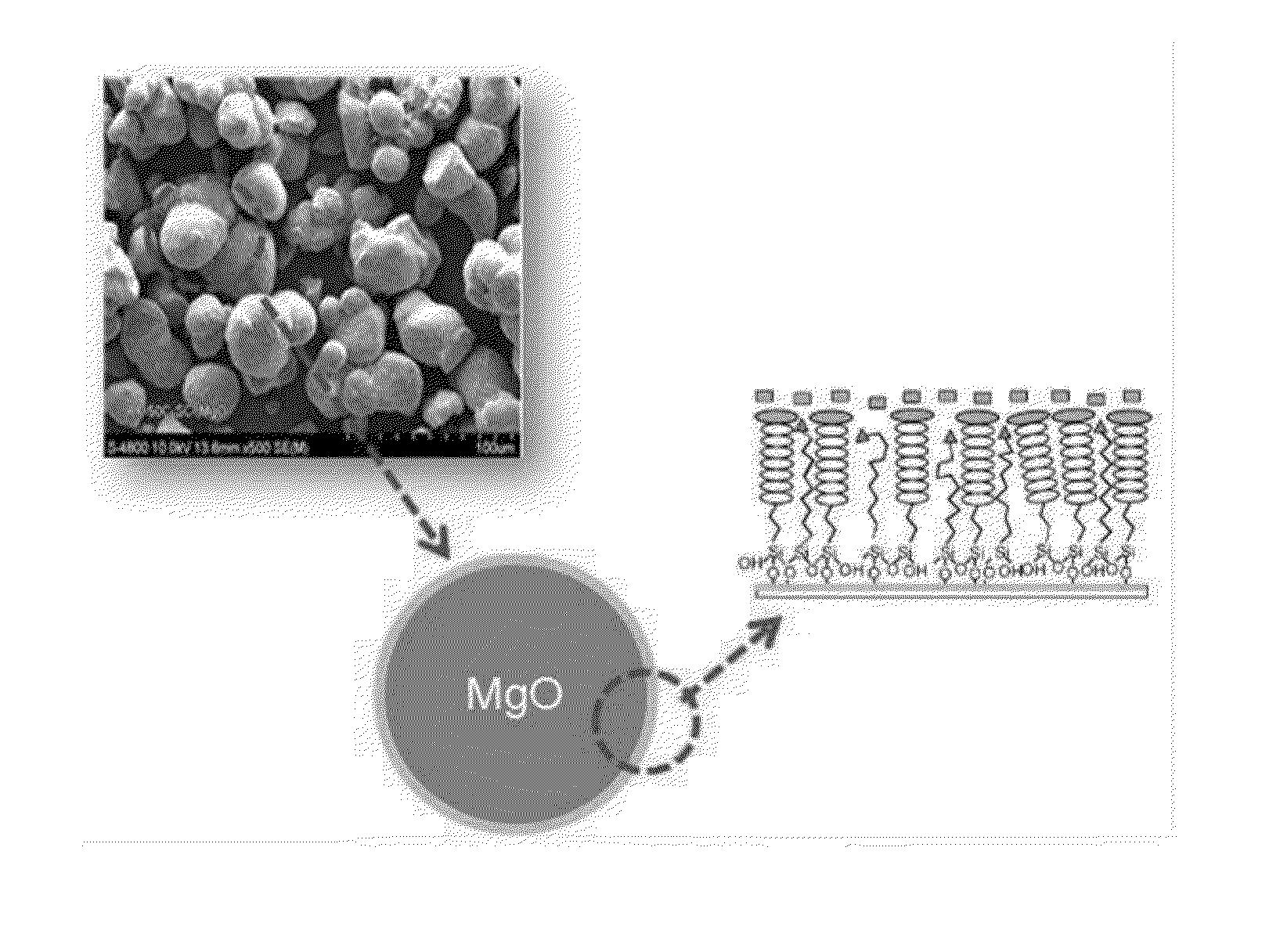Thermoplastic Resin Composition Having Improved Thermal Conductivity and Articles Thereof
a technology of thermal conductivity and composition, applied in the field of thermal conductivity of thermoplastic resin composition, can solve the problems of high processing cost of metals, electronic devices becoming thinner or lighter in weight, and heat sinks made of metals are light weight, etc., and achieve excellent physical properties and improved thermal conductivity
- Summary
- Abstract
- Description
- Claims
- Application Information
AI Technical Summary
Benefits of technology
Problems solved by technology
Method used
Image
Examples
first embodiment
EXAMPLES OF THE FIRST EMBODIMENT
[0097]The specification of each component used in the examples and comparative examples for the first exemplary embodiment are given below.
[0098](A) Polyphenylene Sulfide (PPS) Resin
[0099]Polyphenylene sulfide resin from Dukyang (China) having a weight average molecular weight of 32,000 g / mol is used.
[0100](B) Thermally Conductive Fillers
[0101](b1) A spherical magnesium oxide (MgO) having an average particle size of 50 μm and a BET of 0.5 m2 / g is used.
[0102](b2) A spherical aluminum oxide (Al2O3) having an average particle size of 50 μm from Denka (Japan) is used.
[0103](b3) A flaky aluminum oxide (Al2O3) having an aspect ratio of 6 is used.
[0104](b4) A flaky boron nitride (BN) having an aspect ratio of 7 from Momentive (U.S.A) is used.
[0105](b5) A spherical magnesium oxide (MgO) having an average particle size of 20 μm and a BET of 0.7 m2 / g is used.
[0106](b6) A spherical magnesium oxide (MgO) having an average particle size of 100 μm and a BET of 0.1 ...
example 1
[0109]30% by weight of the polyphenylene sulfide resin (A) and 70% by weight of the spherical magnesium oxide (b1) as thermally conductive filler are mixed to prepare a polyphenylene sulfide resin composition. This polyphenylene sulfide resin composition is processed by a twin screw extruder with a screw size L / D=36, Φ=45 mm and a cylinder temperature of 250 to 350° C. to prepare pellets. The prepared pallets are dried at 90° C. for more than three hours and specimens in accordance with ASTM specifications are prepared by injection molding at a temperature of 300° C. to measure the physical properties, such as the thermal diffusivity, flexural modulus and surface resistivity.
example 4
[0132]30% by weight of the polyamide resin (A) and 70% by weight of the spherical magnesium oxide treated with silane oligomer (b12) as thermally conductive filler are mixed to prepare the polyamide resin composition. This polyamide resin composition is processed by a twin screw extruder with a screw size L / D=36, Φ=45 mm and a cylinder temperature of 250 to 350° C. to prepare pellets. The prepared pallets are dried at 90° C. for more than three hours and specimens in accordance with ASTM specifications are prepared by injection molding at a temperature of 300° C. to measure the physical properties, such as the thermal conductivity, flexural strength, flexural modulus and tensile strength.
PUM
| Property | Measurement | Unit |
|---|---|---|
| thermal diffusivity | aaaaa | aaaaa |
| particle size | aaaaa | aaaaa |
| specific surface area | aaaaa | aaaaa |
Abstract
Description
Claims
Application Information
 Login to view more
Login to view more - R&D Engineer
- R&D Manager
- IP Professional
- Industry Leading Data Capabilities
- Powerful AI technology
- Patent DNA Extraction
Browse by: Latest US Patents, China's latest patents, Technical Efficacy Thesaurus, Application Domain, Technology Topic.
© 2024 PatSnap. All rights reserved.Legal|Privacy policy|Modern Slavery Act Transparency Statement|Sitemap



